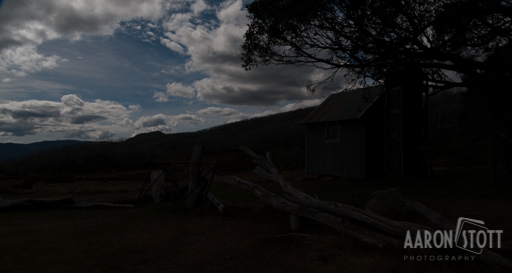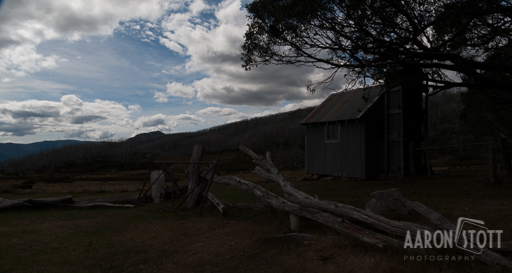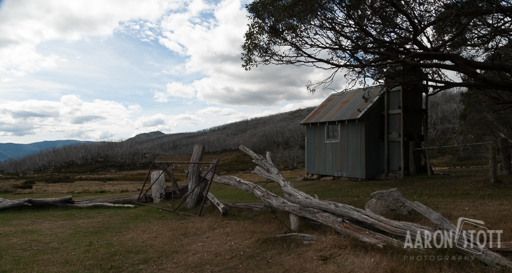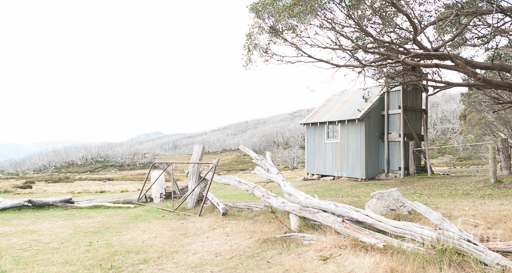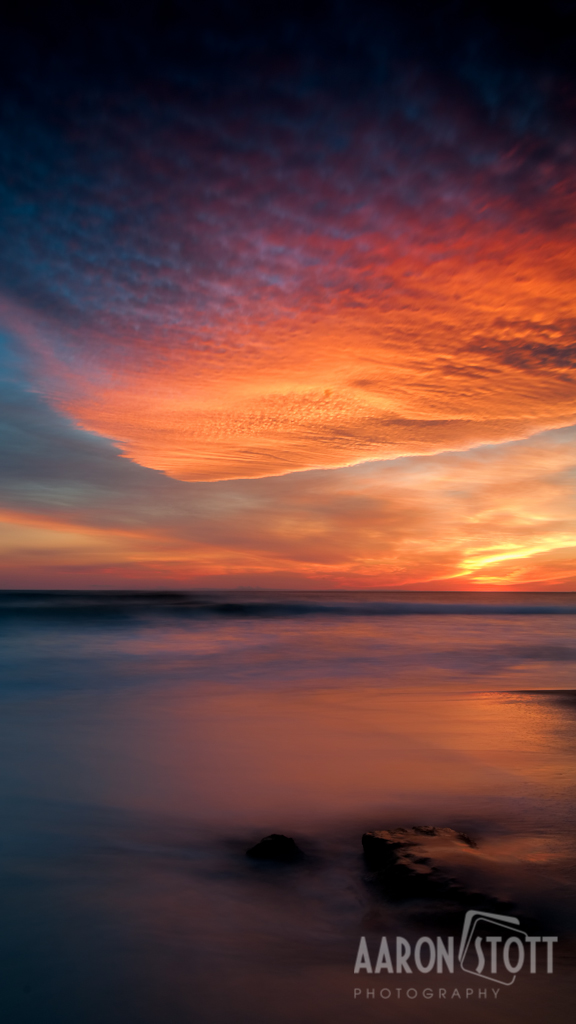A couple of weeks ago I went up to the Bogong High Plains to photograph Tawonga Huts which are a 4 km walk from Pretty Valley Pondage. Cattlemen’s huts have been located on the site since the late 1880 and have been rebuilt several times over the years with the most recent one being constructed in the early 1970s.
I arrived at the site around 10:00 am (unfortunately well after sunrise) while it was a cloudy day there were prolonged periods of bright sunshine which made for some challenging lighting conditions. Ordinarily I would use graduated ND filters to bring down the exposure of the sky however in this instance they would have also unnecessarily darkened the hut I was trying to photograph. Therefore to try and capture the full dynamic range of the scene I decided to take a bracketed series of photographs (with exposure values of 0, +/-2 and +/-1) with the intention of HDR processing them through Photomatrix Pro. For these images I used my Pentax K7 and DA* 16-50mm lens, the camera was mounted on a tripod and the shutter was fired with a Pentax cable release.
I have included the 5 shots taken below that were used to produce the final image. These images are the RAW files and are unprocessed, however as you can see I have been able to capture the full dynamic range of the scene with good detail in the sky in the -2 and -1 EV shots, and in the +1 and +2 EV shots I have got a lot of detail recorded in the log fence, shadow areas of the hut and some detail in the overhanging snow gum.
Below is the final image once the above 5 were processed through Photomatrix Pro and Photoshop CC.
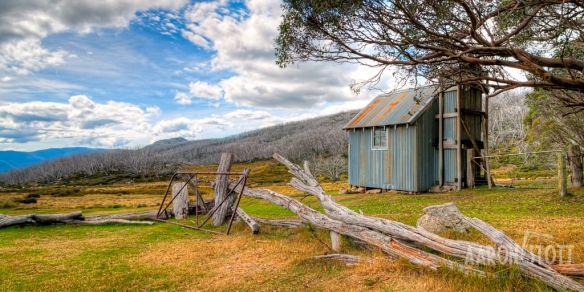
5 image HDR composite of Tawonga Huts on the Bogong High Plains (Alpine National Park). Pentax K7, Pentax DA*16-50mm, ISO 100, f/11, 1/15sec.
The final HDR image turned out much better than I had hoped and it is a great representation of the scene; I am really happy with it, it certainly made the 10hrs of driving and 8 km round trip walk worthwhile!
Join the conversation on facebook @ facebook.com/aaronstottphotography

